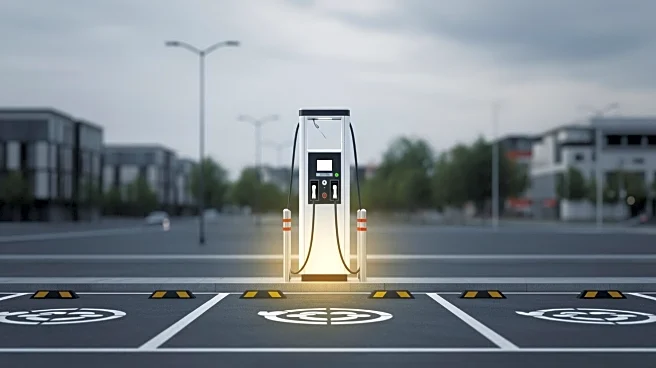What's Happening?
In October 2025, U.S. plug-in vehicle sales experienced a significant decline, dropping 27% compared to the previous year. Battery electric vehicles (BEVs) accounted for 80% of plug-in electric vehicle sales during
this period. Despite the October downturn, the overall sales of plug-in electric vehicles in 2024 reached over 1.5 million units, marking a 7% increase from 2023. The cumulative sales of plug-in electric vehicles in the U.S. have surpassed 7.6 million units by the end of October 2025. The decline in sales is attributed to the expiration of the U.S. EV tax credit, which had previously boosted sales in the third quarter of 2025.
Why It's Important?
The drop in electric vehicle sales in October highlights the volatility of the EV market and the significant impact of government incentives on consumer purchasing behavior. The expiration of the EV tax credit by Republicans has led to a temporary decrease in sales, underscoring the importance of policy support for the growth of the electric vehicle industry. This decline may affect the pace of transition from internal combustion engine vehicles to electric vehicles, impacting efforts to reduce carbon emissions and improve air quality. Stakeholders in the EV industry, including manufacturers and policymakers, may need to reassess strategies to sustain growth and encourage consumer adoption.
What's Next?
The electric vehicle market may see fluctuations as stakeholders respond to the changes in policy incentives. Manufacturers might explore alternative strategies to maintain sales momentum, such as introducing new models or enhancing existing ones to attract consumers. Policymakers could consider revisiting incentive structures to support the EV market and align with environmental goals. The industry will likely monitor consumer responses and adjust marketing and production plans accordingly to navigate the evolving landscape.












